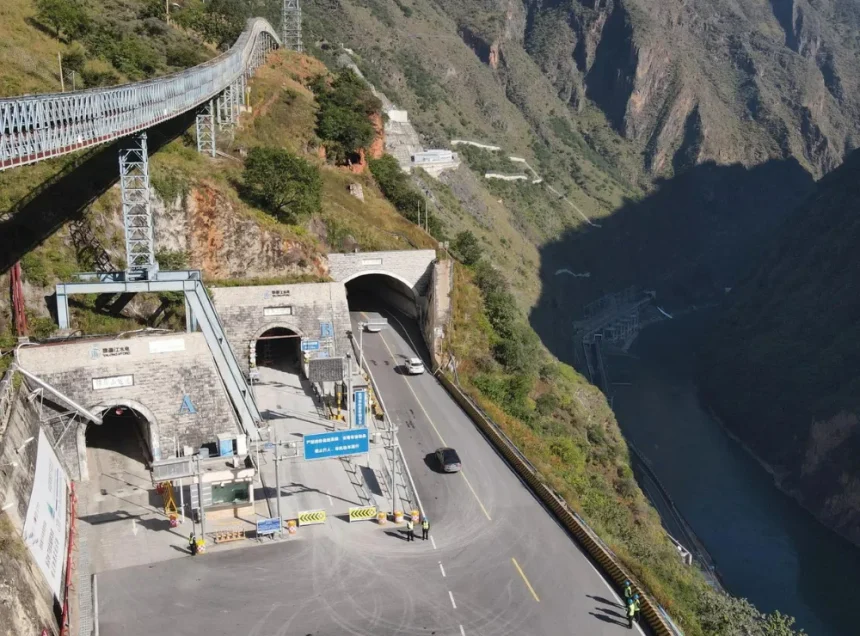Underneath the formidable Jinping Mountains in the southwestern region of China, a remarkable scientific achievement has been realized. The China Jinping Underground Laboratory (CJPL-II) has recently commenced its second phase, solidifying its position as the most profound and extensive underground laboratory globally. The architectural achievement is of immense proportions, descending 2,400 meters (7,874 feet) below the Earth’s surface. It provides scientists with an unparalleled opportunity to explore the most enigmatic aspects of the universe.
CJPL-II has a massive volume of 330,000 cubic meters (11.7 million cubic feet), making it much larger than its previous versions and even surpassing the well-known Gran Sasso National Laboratory in Italy. This vast expanse is not just an impressive feat of engineering; it performs a significant and meaningful function. The profound depth forms a protective barrier, significantly diminishing cosmic rays and background radiation by an astonishing factor of 100 million. This immaculate habitat offers scientists an unparalleled chance to carry out study on dark matter.
The enigmatic nature of dark matter, which accounts for more than 80% of the total mass in the universe, continues to be a mystery. The elusive and unobservable aspect of this phenomenon has sparked scientific curiosity for many years. CJPL-II aims to alter that situation. The lab provides an optimal environment for searching for the weakest interactions between dark matter particles and conventional matter by protecting sensitive detectors from cosmic noise.
The experiments conducted at CJPL-II encompass a wide spectrum of investigations, with each one seeking to reveal a specific aspect of the enigmatic dark matter phenomenon. Certain detectors aim to directly discover particles of dark matter, while others investigate indirect signs, such as the hypothetical process of dark matter annihilating into particles of the Standard Model. The laboratory also functions as a platform for conducting experiments in astroparticle physics, researching neutrinos, and investigating basic interactions.
The commencement of CJPL-II represents a significant turning point in the quest for fundamental understanding. The ability to reveal the previously undisclosed mysteries of dark matter has the potential to revolutionize our comprehension of the composition and development of the cosmos. In addition to studying dark matter, the laboratory serves as a platform for pioneering research in several disciplines, expanding the limits of scientific knowledge.
However, CJPL-II encompasses more than only scientific achievements. The building and operation of this project serve as evidence of China’s increasing scientific capability and dedication to basic research. This enormous initiative exemplifies the potential of worldwide collaboration in addressing basic scientific difficulties, thereby paving the way for a future where the pursuit of knowledge surpasses national boundaries.
As the world explores the Jinping Mountains more, the scientific community focuses its attention on the secluded chambers of CJPL-II. Within those depths, lies the possibility to unveil the essence of dark matter and gain insight into the fundamental structure of the cosmos. Through a series of experiments and collaborations, CJPL-II is gradually advancing our comprehension of the unknown, step by step, while overcoming the challenges of a lengthy journey and elusive answers. This progress is achieved by shielding cosmic rays along the way.








